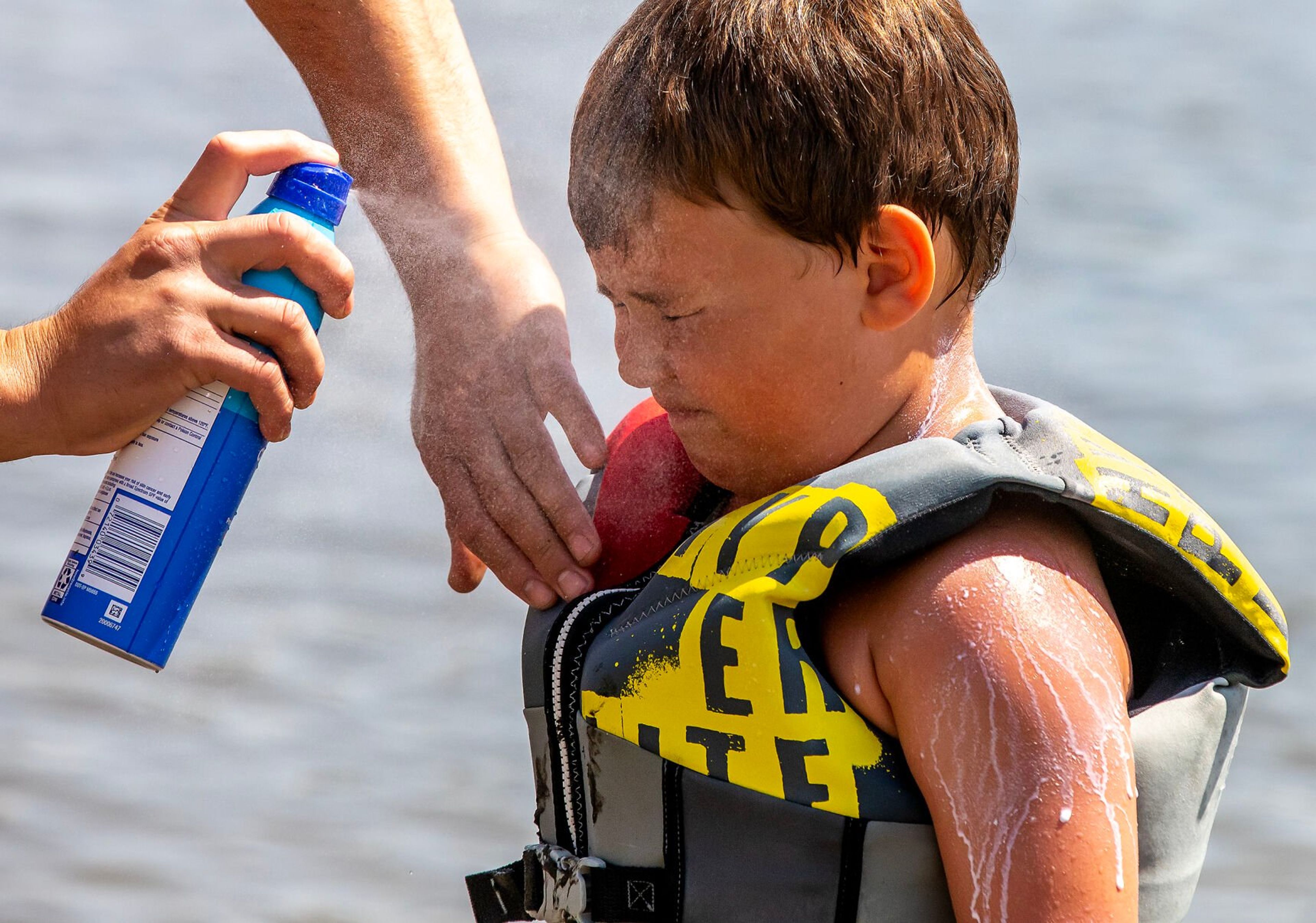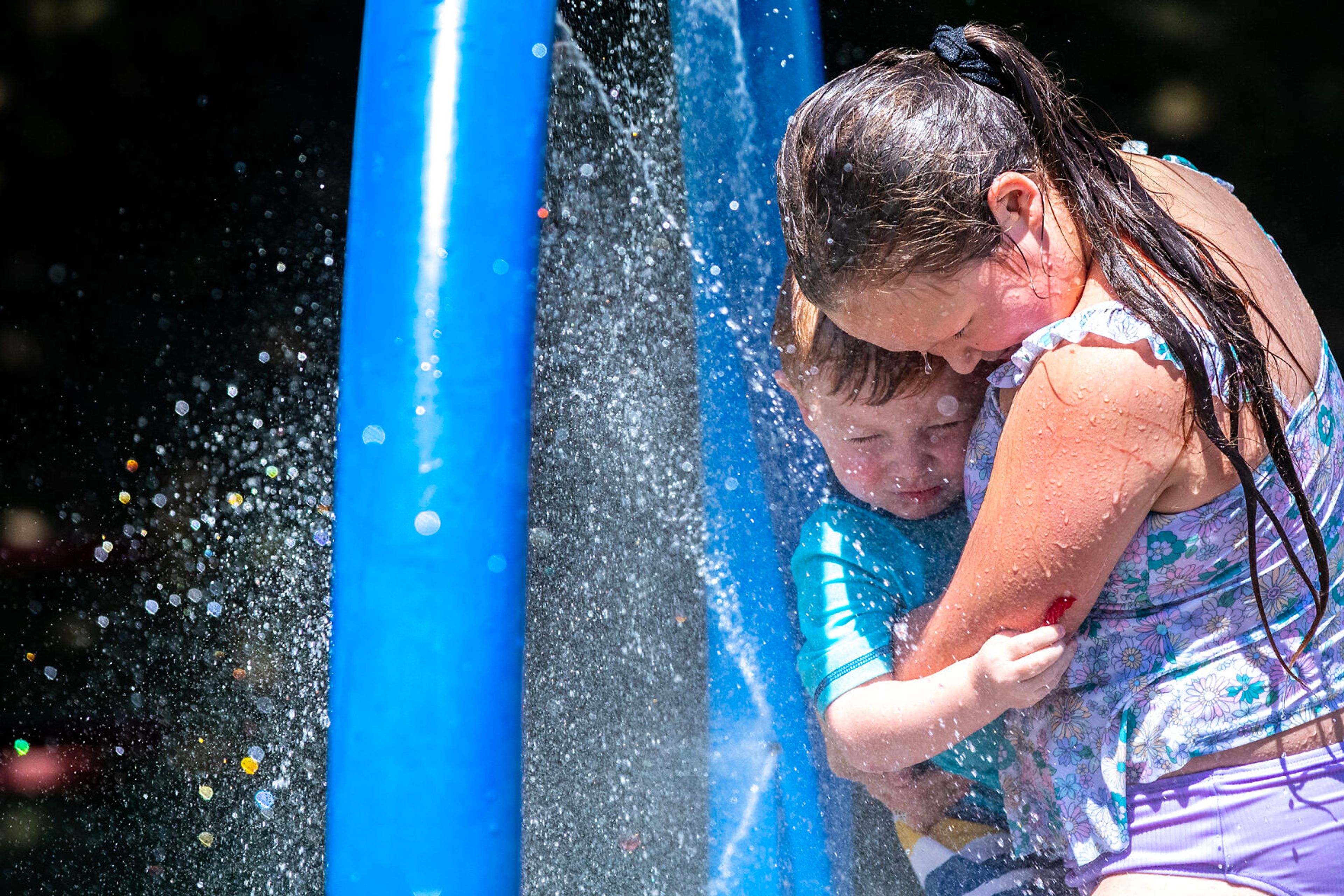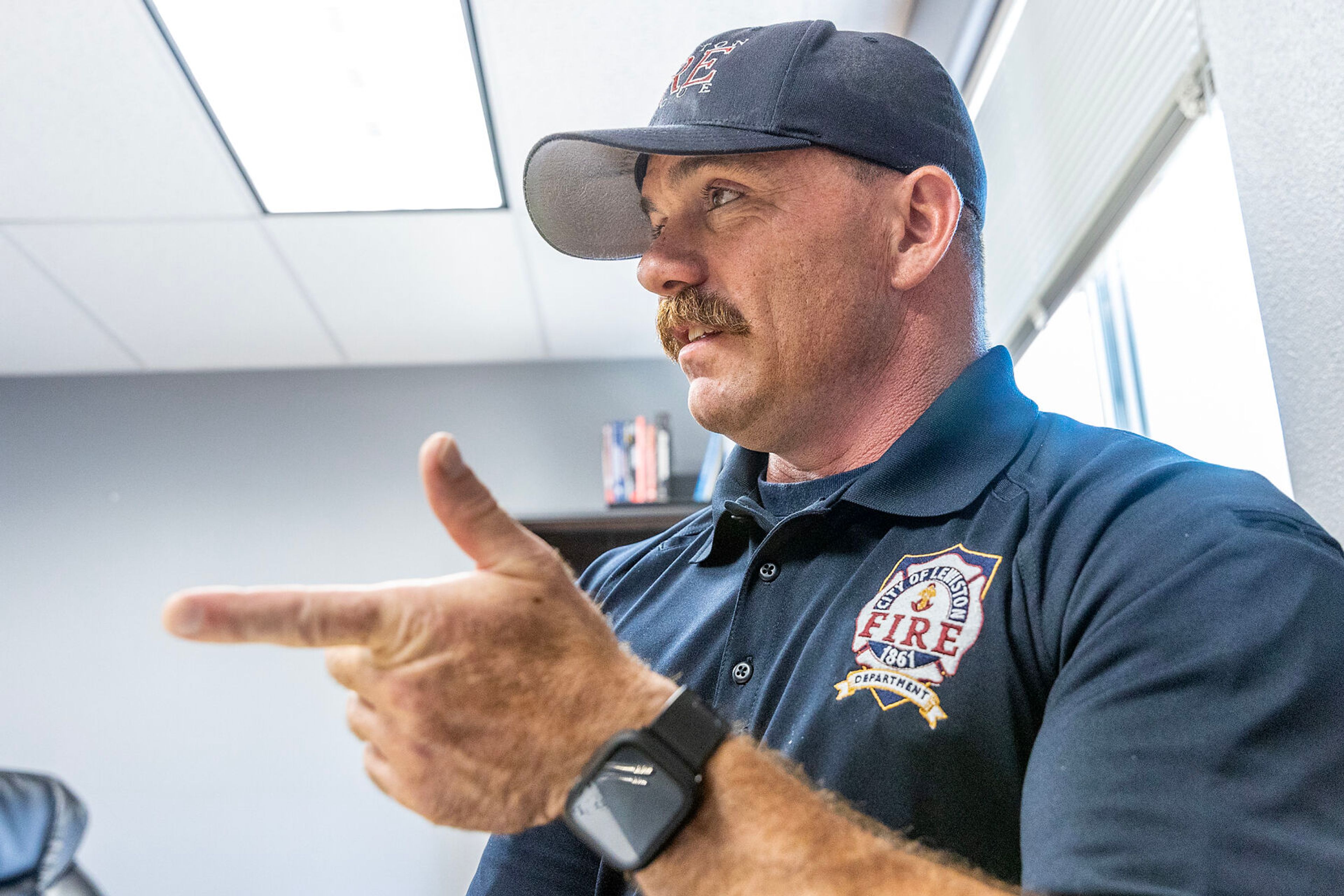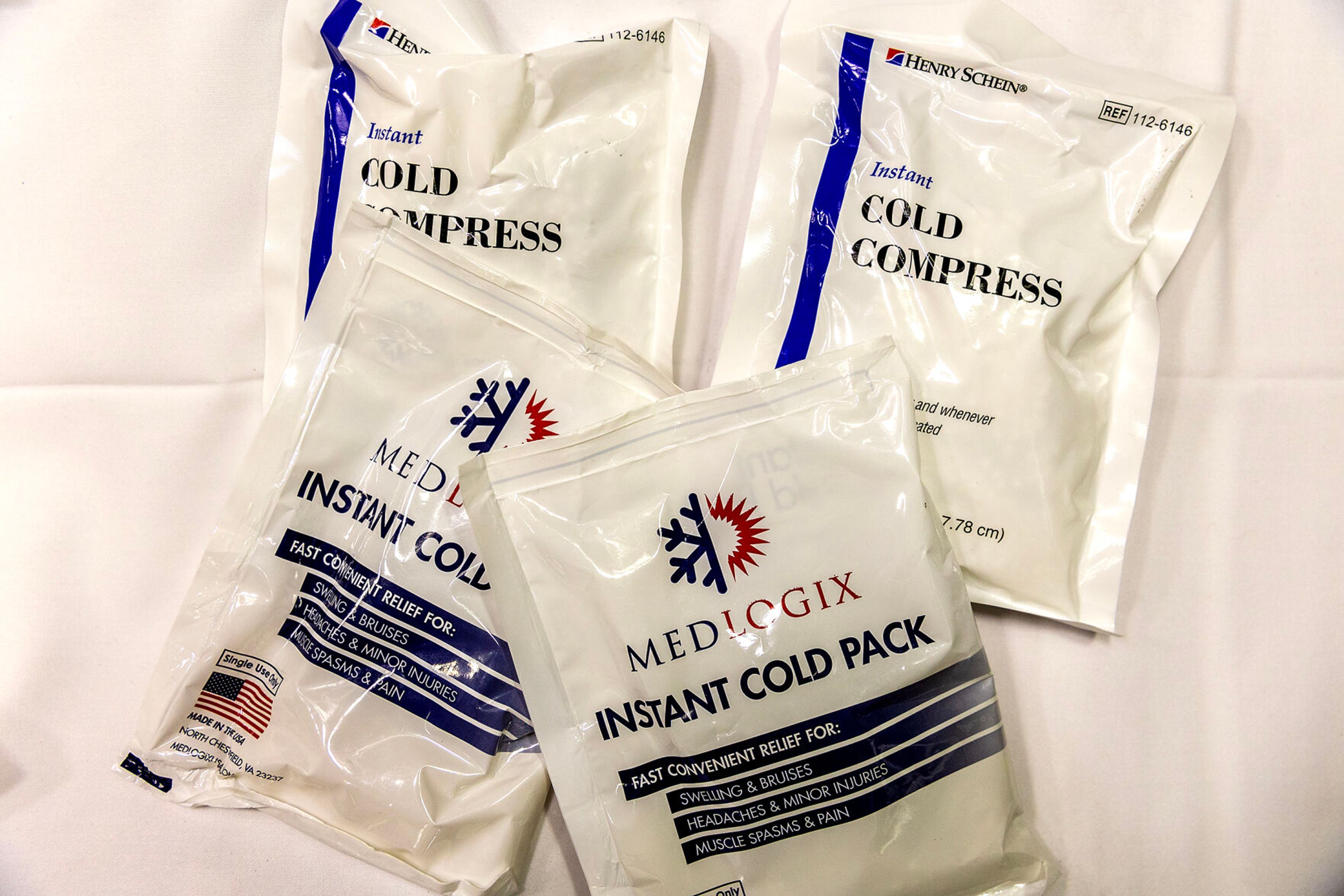Staying healthy in the heat
Here are some things to keep in mind when you’re enjoying, or enduring, the hot weather
For some, summertime is the peak season for relaxing and spending time outdoors. But those warm, sunny days can turn dangerous without the right precautions.
Richie Lucas is the interim operations chief and deputy fire chief for the Lewiston Fire Department. He said emergency medical technicians often see heat exhaustion and heat stroke in people who’ve been drinking and recreating outdoors.
“A lot of times, excessive alcohol use in the sun … people don’t realize it,” he said.
An ounce — or 32 — of prevention
Ideally, preventing heat illness is better than treating it. The Centers for Disease Control and Prevention recommends people working in the heat drink 8 ounces of water every 15 to 20 minutes, or 32 ounces every hour.
For most people, regular meals and water intake are sufficient to maintain hydration and electrolyte balance. However, for prolonged sweating lasting several hours, electrolyte drinks can be beneficial.
The CDC also recommends avoiding alcohol in the heat because of its dehydrating effects, and avoiding energy drinks, which can affect the heart because of high caffeine levels and be risky when paired with the bodily strain caused by heat.
Sunscreen is also important, Lucas said — not just to prevent skin cancer, but because sunburns reduce the body’s ability to regulate heat. Sunscreen should be a minimum of SPF 30, and be reapplied every two hours, or more frequently when in the water.
Sunscreens labeled “water resistant” can remain effective between 40 and 80 minutes in the water before requiring reapplication, depending on the formulation.
Some people are also more susceptible to heat illness than others, and may need to exercise additional caution. People who are elderly, young children and people with medical conditions such as high blood pressure or diabetes are all at higher risk of heat illness.
People on certain medications such as antihistamines, diuretics and psychiatric medications including antidepressants and antipsychotics are also more susceptible to heat.
People who work certain jobs in hot environments like farming, construction, foundry work or baking are also at an increased risk.
Even when heat isn’t the direct cause of death, it’s been known to lead to fatigue that results in workplace injury or death, said Dave Kearns, Boise-area director for the Occupational Safety and Health Administration.
Workplaces are responsible for providing appropriate rest, water and climatization for employees. If they do not, employees can file complaints at osha.gov.
Treating heat illness
There are three progressively severe forms of heat illness someone can experience: heat cramps, heat exhaustion and heat illness.
HEAT CRAMPS — Heat cramps are the earliest stage, and are characterized by painful cramping, often in the fingers, arms, legs and abdomen. It can also include flushed, moist skin and a minor fever, usually under 102.5 degrees. It is treated by moving to a cool location, removing excess clothing, rehydrating with electrolytes, stretching to ease cramps, and using things like a cool, damp towel to reduce body temperature.
It’s also important to not over-cool someone, Lucas said.
“You don’t want to over-cool someone, because if you induce shivering, shivering is like your body’s mechanism of heating up,” he said. “Shivering will increase their body temperature. So it’s kind of counterproductive to itself.”
HEAT EXHAUSTION — Heat exhaustion is more severe, and results from a loss of water and salt. It typically happens in extreme heat when someone isn’t properly hydrating and replacing the salt lost from sweating.
Symptoms of heat exhaustion include some of the same symptoms as heat cramps — usually a fever of more than 102 degrees. A person may appear pale in addition to having moist skin. It can also include symptoms such as nausea, vomiting, headaches, fatigue, diarrhea, weakness and feeling lightheaded or anxious. The treatment for heat exhaustion is the same as heat cramps. If one’s condition does not improve, or someone is unable to take fluids, emergency services should be called.
HEAT STROKE — This is an emergency, and requires immediate intervention and a call to 911. Heat stroke is characterized by symptoms including a body temperature above 104 degrees; warm, dry skin; a rapid heart rate; confusion; lethargy; loss of consciousness; nausea; and vomiting. In extreme cases, it can cause seizure, coma or death. Lucas notes a person with heat stroke may still have damp skin, but sweating will have subsided.
While waiting for emergency services, people with heat stroke should be moved to a cool place to rest and offered cool fluids with electrolytes, without alcohol or caffeine, if they’re alert and able to take them. The Johns Hopkins School of Medicine recommends drenching the skin in cool water, fanning the skin and placing bags of ice in the armpit and groin area.
Cars, kids and pet safety
Every year, around 38 children, and hundreds of pets, die from heat stroke after being left in a hot car. Even when temperatures outside are comfortable, it doesn’t mean it’s safe to leave children or pets in a car.
A car’s internal temperature can increase by up to 20 degrees in 10 minutes, and 40 degrees within one hour.
Stanford researchers also found that cracking car windows or running the air conditioner prior to leaving a car had an insignificant effect on the rate of heating, and the final temperature.
The study found that running the air conditioner before leaving the car only delayed a temperature spike by about five minutes.
Dog owners are also recommended to walk dogs before 9 a.m. or after the sun sets in the summer, said veterinarian Jessica Bell, and they should use their hand to check how hot pavement is before walking their dog.
Some breeds are more susceptible to heat than others, such as large dogs like mastiffs, or flat-faced dogs like pugs.
Animals that are kept outside need to have access to adequate shade and cool water at all times.
Sun may be contacted at rsun@lmtribune.com or on Twitter at @Rachel_M_Sun. This report is made in partnership with Northwest Public Broadcasting, the Lewiston Tribune and the Moscow-Pullman Daily News.
Tips for beating the heat
Never leave children or pets in cars. A car’s internal temperature can increase by 20 degrees in 10 minutes, and 40 degrees within an hour. Cracking windows or running the AC beforehand doesn’t significantly reduce the final temperature, or speed at which a car heats.
Sunburns reduce your ability to regulate heat. When exposed to sun, wear SPF 30 or higher and reapply as directed — about every two hours for normal activity, and between 40 and 80 minutes using water-resistant sunscreen when swimming or doing other water sports.
Heat illness often occurs when outdoor recreation is paired with drinking. Limit alcohol consumption, and make sure to hydrate with water.
High caffeine levels can negatively affect your heart and add to the strain on a body already dealing with extreme heat. The Centers for Disease Control and Prevention recommends avoiding energy drinks in the heat.
The CDC recommends people working in the heat should drink 8 ounces of water every 15 to 20 minutes, or 32 ounces every hour.
Certain medications, including antihistamines, diuretics, antidepressants and antipsychotics can increase susceptibility to heat.









